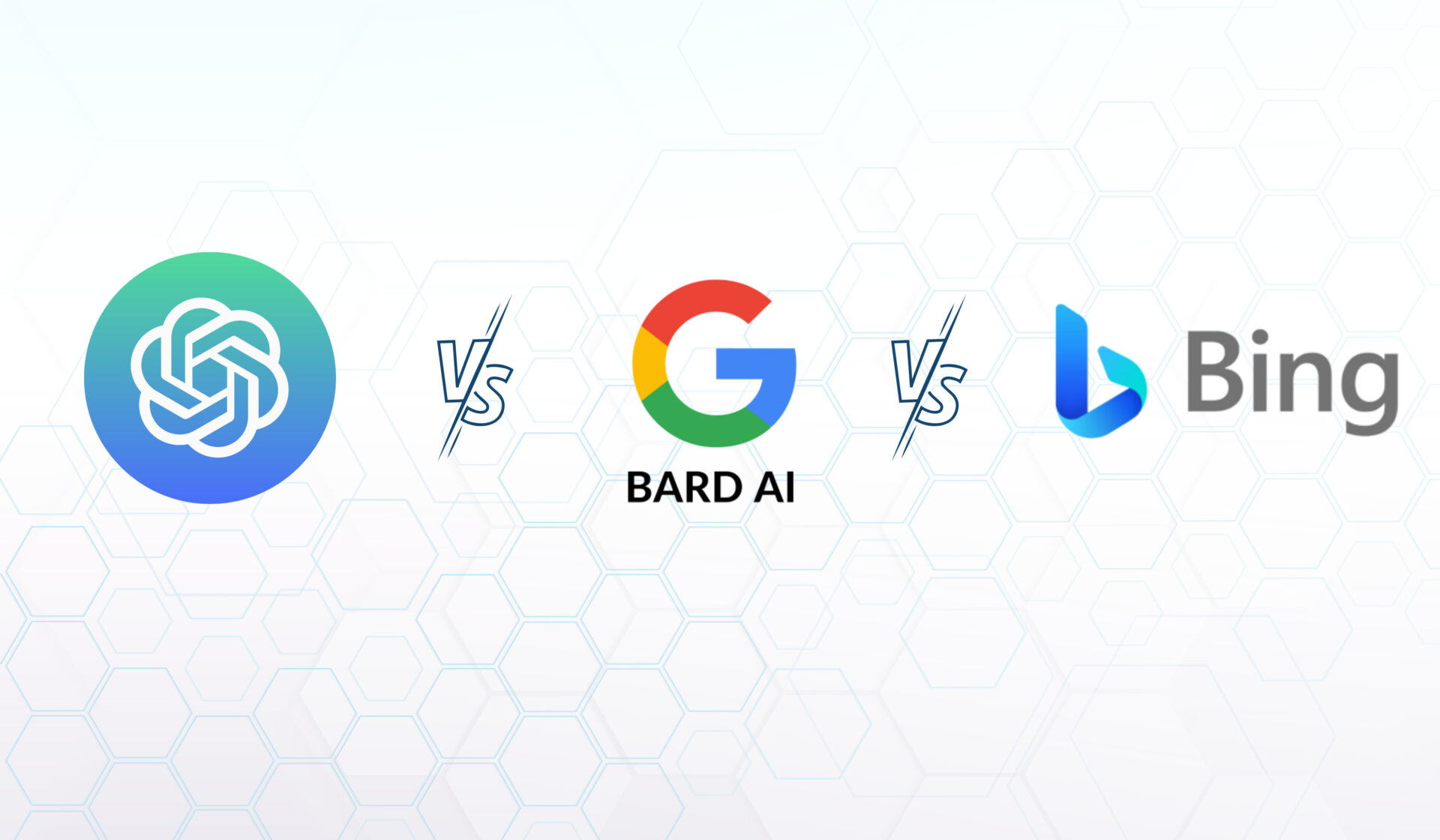In the ever-evolving realm of artificial intelligence (AI), language models have taken center stage, redefining the way humans interact with technology. Three prominent players in this space, Google Bard Vs ChatGPT Vs Bing, have gained immense recognition for their natural language processing capabilities. Each of these models offers a unique approach to understanding and generating human-like text. In this article, we’ll delve into the distinctions and applications of Google Bard, ChatGPT, and Bing, helping you choose the right tool for your specific needs.
The Rise of AI Language Models
Before we jump into the battle of Google Bard, ChatGPT, and Bing, let’s briefly explore the context and significance of AI language models.
Language models, powered by deep learning techniques and neural networks, have been developed to process and generate human language. These models have become instrumental in various applications, including chatbots, virtual assistants, content generation, and translation services.
Google Bard, ChatGPT, and Bing are cutting-edge language models that have been fine-tuned and optimized for different purposes, providing a wealth of possibilities for developers and businesses.
Google Bard: The Maestro of Natural Language Generation
Google Bard, a product of Google’s DeepMind, is a state-of-the-art AI language model known for its incredible text generation capabilities. What sets Bard apart is its ability to generate text that reads like it was written by a human author. The model excels in creative writing, content generation, and storytelling.
Bard is often used in content marketing and creative writing projects, where high-quality, engaging content is a necessity. Its ability to produce creative and original content makes it an ideal choice for businesses seeking to create compelling blog posts, marketing copy, or even works of fiction.
Despite its impressive text generation capabilities, Google Bard is not ideal for tasks that require highly factual or data-driven information, as it may generate content that is more artistic than precise.
ChatGPT: Conversational Intelligence Redefined
ChatGPT, developed by OpenAI, is renowned for its conversational prowess. This model is designed to simulate human-like text-based conversations, making it an excellent choice for chatbots, virtual assistants, and customer support applications.
ChatGPT’s key strength lies in its ability to understand context and generate coherent responses in conversation. It has been fine-tuned on a massive dataset of text from the internet, enabling it to discuss a wide range of topics and answer user queries effectively.
Many businesses have adopted ChatGPT to enhance their customer support and engagement. It can handle simple queries, provide product recommendations, and offer a personalized chat experience, all while maintaining a conversational tone.
Bing: Microsoft’s Answer to Search and Language Understanding
While Google Bard and ChatGPT focus on text generation and conversations, Bing, Microsoft’s search engine, has integrated AI to improve search results and provide a more conversational experience. Microsoft has introduced AI language models to Bing, enhancing its understanding of user queries and generating more relevant search results.
Bing’s AI language model helps the search engine understand the intent behind a query, enabling it to provide more accurate and context-aware search results. It can also assist users in rephrasing their queries for better results, making it a valuable tool for efficient information retrieval.
Google Bard vs. ChatGPT vs. Bing: A Comparative Analysis
Let’s break down the strengths and applications of these three AI language models to help you choose the right one for your specific needs:
Google Bard vs. ChatGPT
Text Generation: Google Bard excels in creative text generation and storytelling, making it the top choice for content marketing, creative writing, and artistic content creation.
Conversational Skills: While Google Bard can generate text, it is not designed for conversational AI applications. If you need a chatbot or virtual assistant, ChatGPT is the better choice.
Content Quality: Bard produces high-quality, engaging content that reads like it was written by a human author. It’s perfect for content that requires a personal touch and creative flair.
ChatGPT vs. Bing
Conversational Intelligence: ChatGPT is the leader in conversational AI, making it the ideal choice for chatbots, virtual assistants, and customer support applications.
Search Enhancement: Bing’s integration with AI language models improves search results and offers a more conversational search experience. It’s beneficial for users seeking context-aware search results.
Customization: ChatGPT can be fine-tuned for specific domains, making it versatile for various industries, from healthcare to e-commerce. Bing’s AI models are primarily focused on enhancing search capabilities.
Choosing the Right Model for Your Needs
Ultimately, the choice between Google Bard vs ChatGPT, and Bing depends on your specific use case:
If you need creative content generation, storytelling, or artistic writing, Google Bard is your maestro.
For conversational AI applications, such as chatbots and virtual assistants, ChatGPT is your conversational partner.
If your primary concern is improving search results and providing a more conversational search experience, Bing with its AI language models is the way to go.
In the dynamic field of AI language models, Chatgpt vs Bard vs Bing each offer their unique strengths and applications. Understanding the nuances of these models is crucial in selecting the right tool to meet your business or project requirements. Whether you’re looking to craft captivating stories, engage with customers through chat, or enhance your search capabilities, these AI language models are ready to empower your endeavors.




